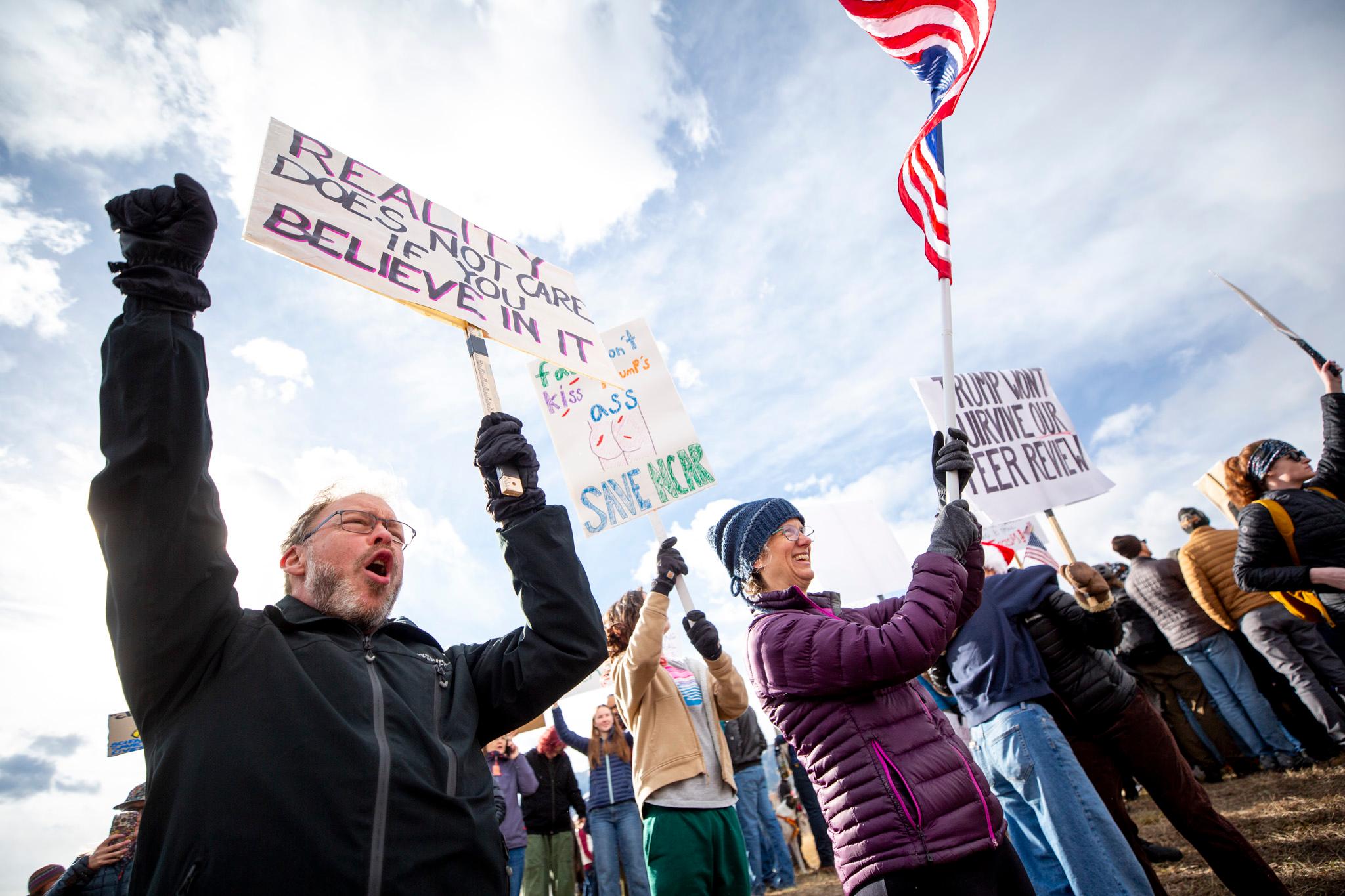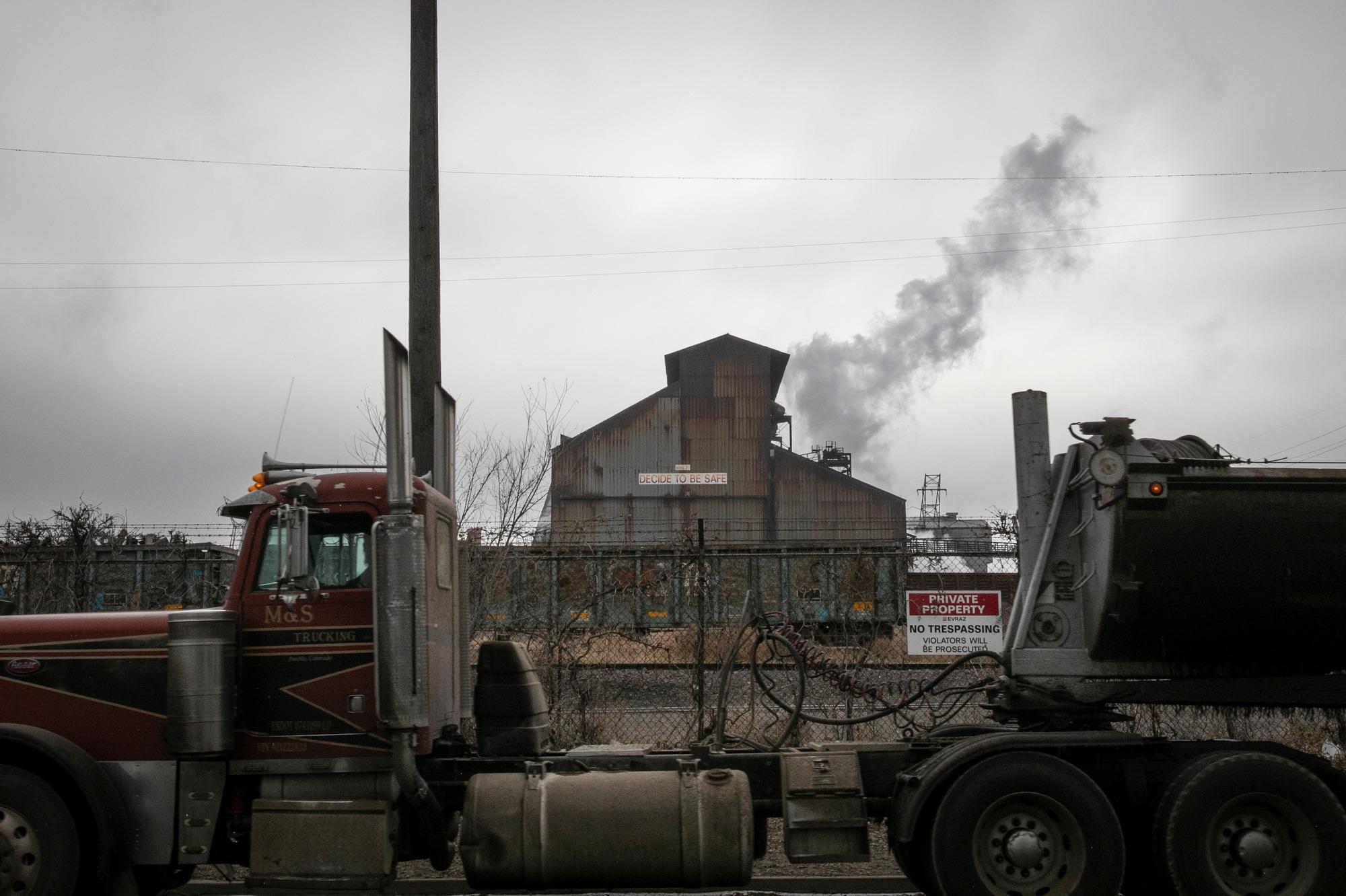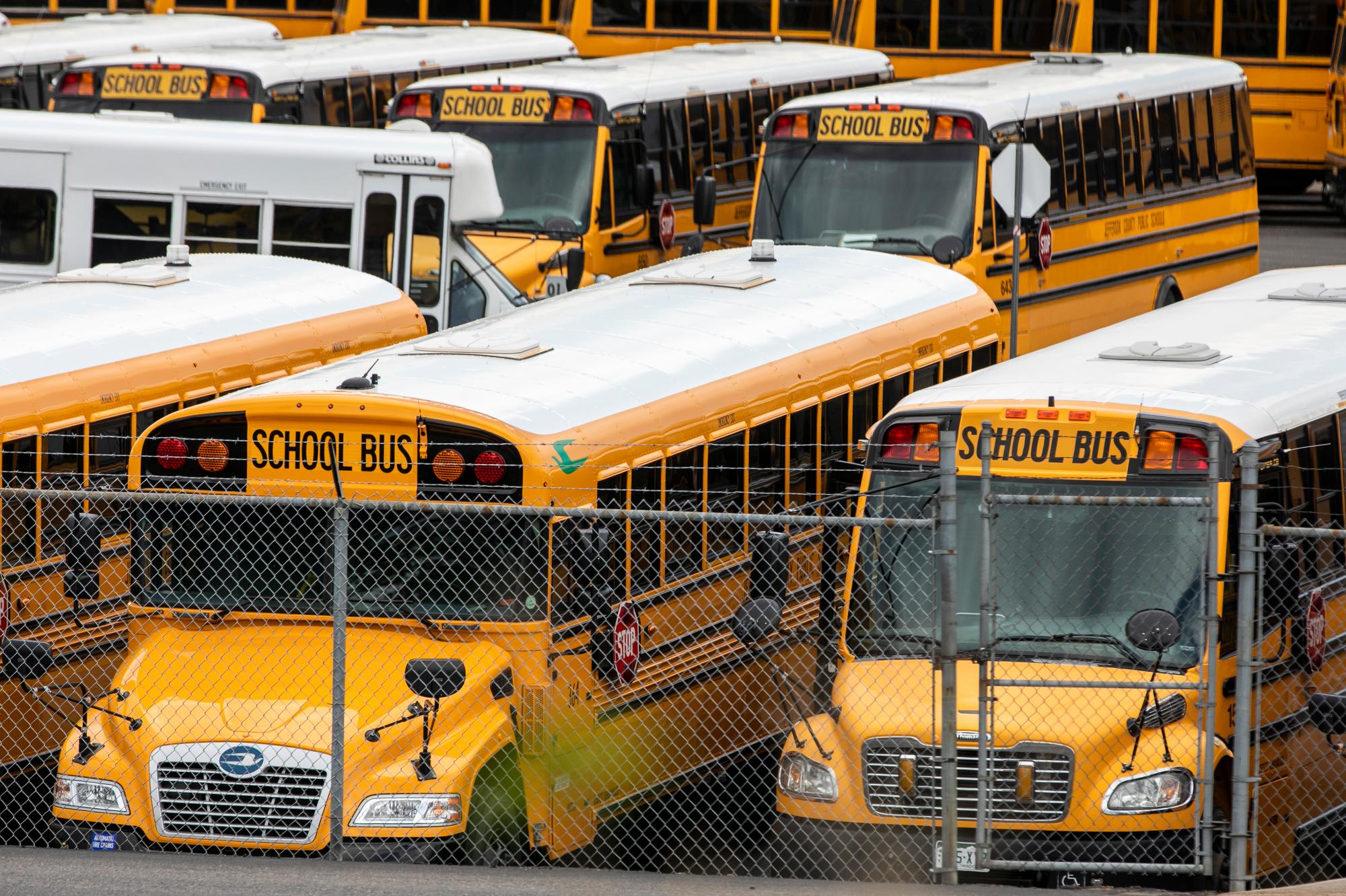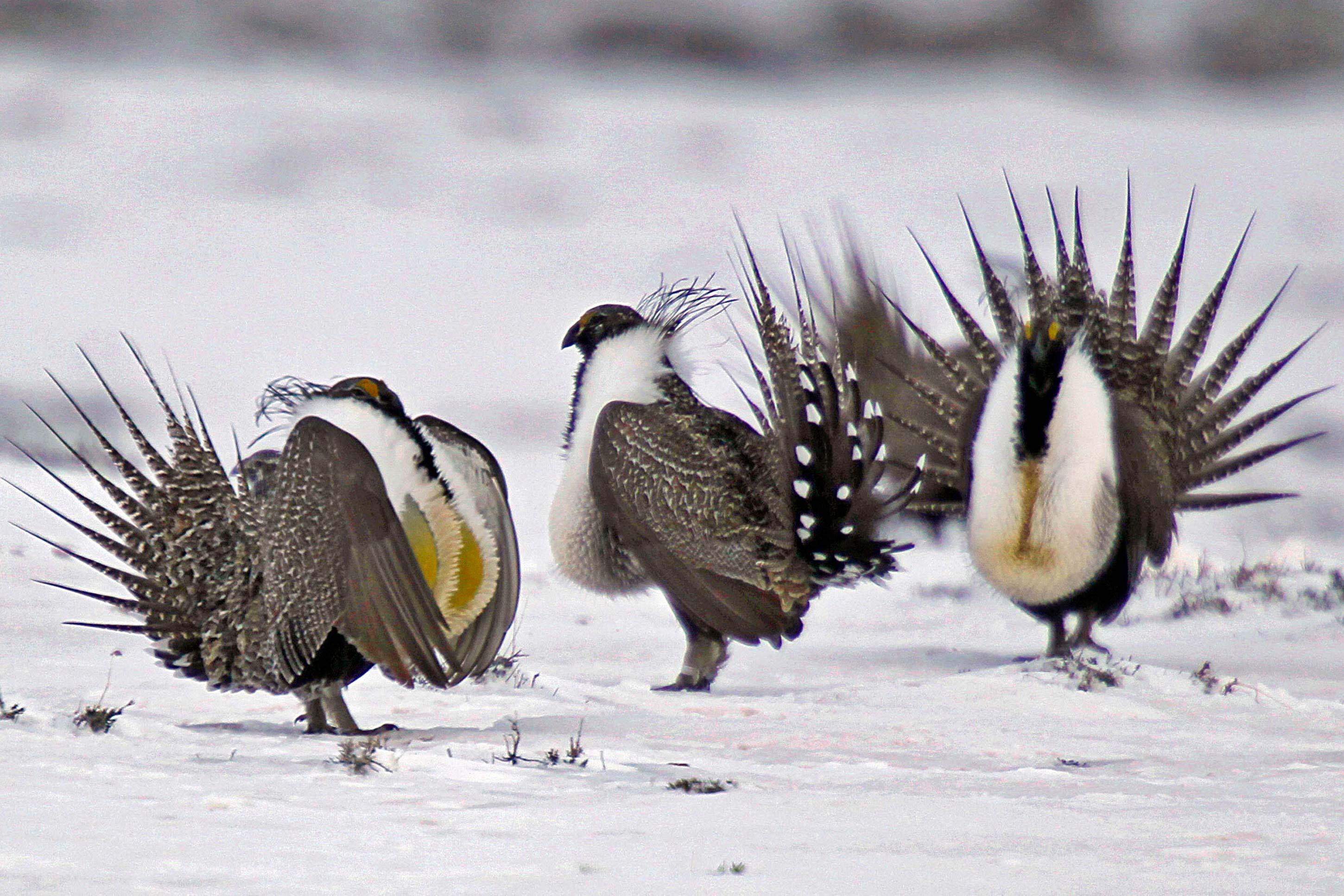
The Trump administration moved forward Thursday with plans to ease restrictions on oil and natural gas drilling and other activities across millions of acres in the American West that were put in place to protect an imperiled bird species.
The proposed amendments would apply to 1.7 million acres of BLM-managed sage-grouse habitat in northwest Colorado. Approval of the final plan would require amendments to five current BLM resource management plans: Colorado River Valley, Grand Junction, Kremmling, Little Snake and White River.
Land management documents released by the U.S. Interior Department show the administration intends to open more public lands to leasing and allow waivers for drilling to encroach into the habitat of greater sage grouse.
Critics warned the changes could wipe out grouse colonies as drilling disrupts breeding grounds. Federal officials under President Barack Obama in 2015 had adopted a sweeping set of land use restrictions intended to benefit the birds.
Interior's plans were published May 4 followed by a 90-day public comment period ended Aug. 2, 2018. The documents say that the new approach aims to, "increase flexibility, maintain access to public resources, and promote conservation outcomes. Nearly three years of experience with the 2015 plans has shown the BLM and its partners what is working and what is not, and how the 2015 plans can be adjusted to recognize concerns."
Interior Deputy Secretary David Bernhardt said the agency was responding to requests by states to give them more flexibility in how public lands are managed. He said the goal to conserve sage grouse was unchanged.
"I completely believe that these plans are leaning forward on the conservation of sage grouse," Bernhardt told The Associated Press. "Do they do it in exactly the same way, no? We made some change in the plans and got rid of some things that are simply not necessary."
In Colorado, the BLM said in a statement that it developed the plan in cooperation "with Gov. John Hickenlooper, state wildlife managers, and other concerned organizations and individuals, largely through the Western Governors Association’s Sage-Grouse Task Force."
“We worked with the Bureau of Land Management and our stakeholders to produce a plan that maintains protection for the sage grouse while balancing the potential impact on local economies,” Hickenlooper is quoted as saying in the BLM statement. “This is a significant step that closes out the planning phase and allows us to begin to see the true conservation efforts that safeguard the sage grouse in Colorado.”
The changes drew a sharp backlash from conservation groups and wildlife advocates, who warned excessive use of drilling waivers could push sage grouse onto the list of threatened and endangered species.
"If you allow exception after exception, that might make sense for a particular project in a particular spot, but you add them all together and you have death by a thousand cuts," said National Wildlife Association vice president Tracy Stone-Manning.
The ground-dwelling grouse ranges across about 270,000 square miles in parts of 11 Western U.S. states and two Canadian provinces. Its numbers have plummeted in recent decades.
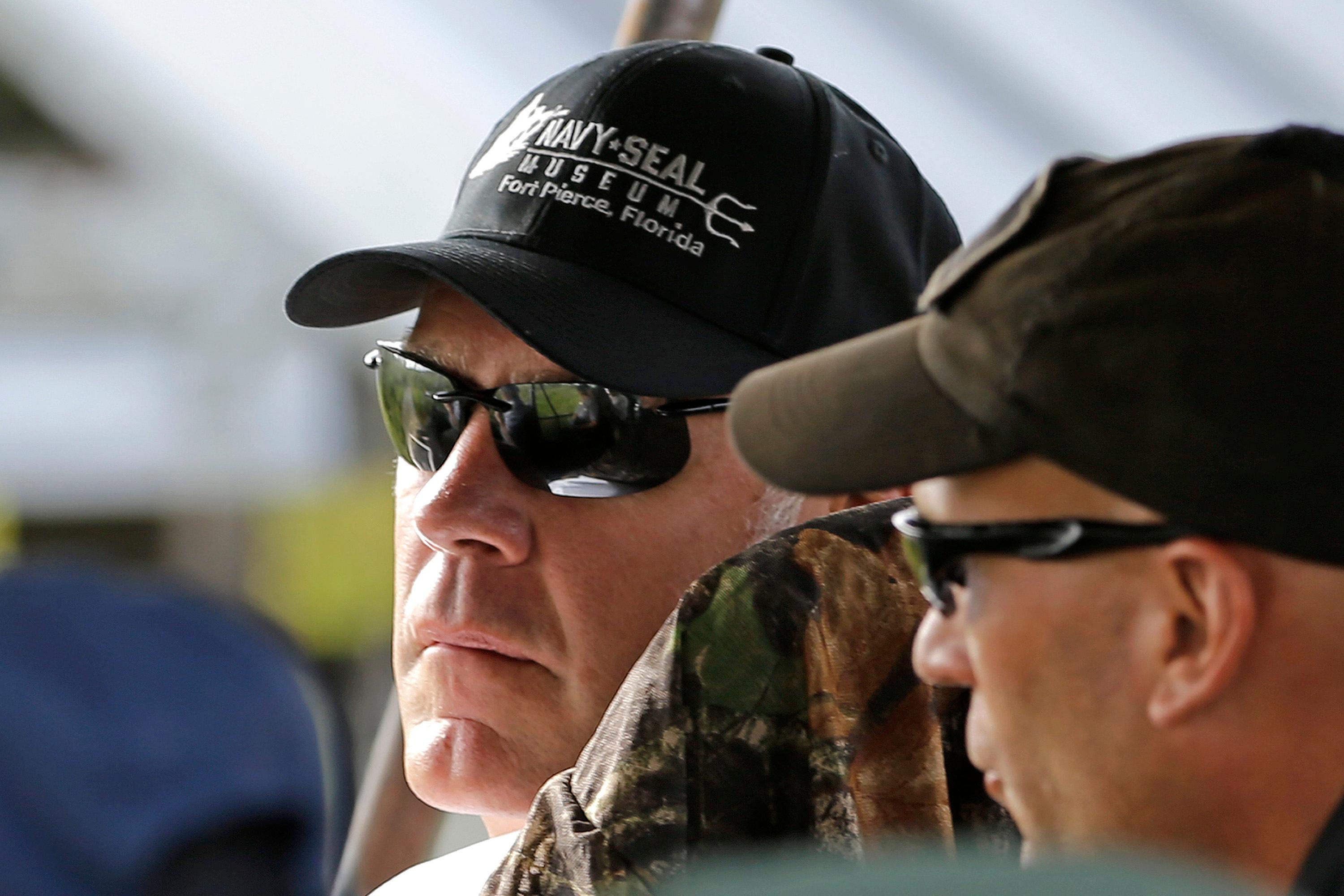
Under President Donald Trump, Interior Secretary Ryan Zinke has vowed to lift obstacles to drilling, and grouse protections have long been viewed by the energy industry as an obstacle to development.
Sage grouse are large, ground-dwelling birds known for an elaborate mating ritual in which males strut around breeding grounds with large, puffed-out air sacs protruding from their chests. They once numbered in the millions. The U.S. Fish and Wildlife Service now estimates the population at 200,000 to 500,000. Energy development, disease and other causes have decimated populations in some areas.
The Trump administration's proposal would reverse or modify the Obama-era protections in seven states — Wyoming, Nevada, Utah, Colorado, California, Idaho and Oregon. The oil and gas industry chafed at the old rules. Once Trump took office, industry representatives pushed the administration to give more recognition to changes in drilling practices that reduce how much land is disturbed for wells.
"We can do both — protect sage grouse and move forward with responsible energy development," said Kathleen Sgamma of the Western Energy Alliance, which represents more than 300 oil and gas companies. "We've reduced the size of well pads, reduced the numbers of wells. And we had done all these things and the prior administration assumed development was taking place like it was 20 years ago."
Governors from several western states previously raised concerns over a related federal directive from the Bureau of Land Management that would limit a type of land swap that can be used to preserve habitat for the birds. Without land swaps and related forms of compensation meant to offset habitat damage, the governors said it would be harder to help the sage grouse survive.
In response, the Interior Department on Thursday revised the directive to say federal officials would consider state-mandated or voluntary proposals for land swaps or similar offsets, but would not accept cash payments.
"Where there's a state requirement, we require in our permits that they comply with state requirements," Bernhardt said.
Utah Gov. Gary Herbert, a Republican, said Thursday announcements showed federal officials heeded the state's concerns.
"This is a great example of federal leaders listening to state leaders, valuing their expertise, and changing their plans based on that input," Herbert said in a statement.
Following Thursday's release of environmental studies analyzing the changes in each state, governors and the public get another chance to weigh in before a final decision is expected in early 2019.
Hickenlooper has 60 days to review the proposed amendments for consistency with state and local laws and regulations. The BLM said that "anyone who participated in the process...and who has an interest that is or may be adversely affected by the proposed land use plan" can file a protest. General instructions can be found here. Or, visit the ePlanning project webpage and follow the instructions at the top of the page.
Hard copies can be mailed to either of these addresses:
- U.S. Postal Service Mail: BLM Director (210), Attention: Protest Coordinator, WO-210, P.O Box 71383, Washington, D.C. 20024-1383
- Overnight Delivery: BLM Director (210), Attention: Protest Coordinator, WO-210, 20 M Street SE, Room 2134LM, Washington, D.C. 20003
BLM said protests submitted electronically by any means other than the ePlanning project website will be invalid unless a protest is also submitted in hard copy.
